Chances are that if you are interested in learning Calligraphy, you are already familiar with cursive, whether from basic schooling (if you were lucky!) or because you really like writing in script styles.
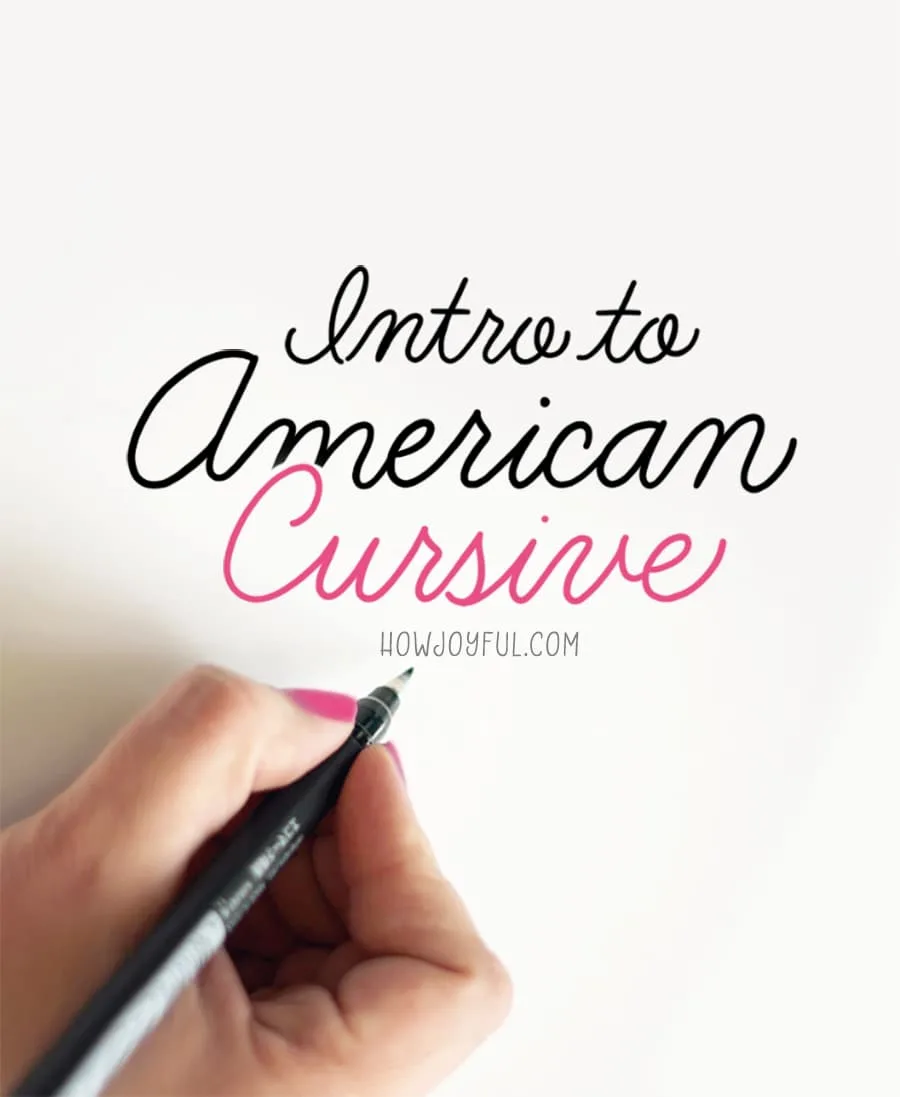
But doing Calligraphy in a scrip style and writing in cursive are two very different things. And in this post we will cover those differences.
Knowing how to write in cursive can be extremely helpful when starting doing calligraphy, but unfortunately, not everyone remembers how to do it, or is even taught how to, depend on where they live.
Writing letters in a group, one attached to another, or in cursive is helpful for carryover of pencil control practice and letter formation, so this style can not only help you to write faster (because you have fewer strokes per letter) but it also offers developmental benefits that will not only improve your regular handwriting but also help you understand the basics of calligraphy better.
So today we are fixing that!
I wrote a workbook for kids!
My new book for teaching cursive to kids and beginners
I have little ones that I want to make sure know how to write in cursive, so I made this workbook for them, BUT now you can also get it printed from Amazon! It has all the basics for them to learn Cursive Handwriting!
In this guide, I will cover everything you should know, and I also will give you a FREE WORKSHEET set of printables so you can start practicing right away! (Download them at the bottom of the post!)
Do you have some questions about cursive writing that you want answering? You’ll find everything you need to know here. There are many benefits to learning cursive writing – some might even surprise you!
Let’s get our cursive on!
- What is cursive lettering?
- The evolution of cursive writing
- Copperplate: The beginning of modern cursive writing
- The continued rise of modern cursive
- Palmer Method
- Zaner-Bloser Style
- D’Nealian Style
- Cursive script’s ever-changing style
- What are the main differences between cursive and print handwriting?
- What tools do I need for writing cursive?
- CAT: Guidelines for cursive
- How do you write the alphabet in cursive handwriting?
- How do you write uppercase letters in cursive?
- How do I write minuscule letters in cursive?
- In what order should I practice the cursive alphabet
- Developing your personal style of handwriting
- Making a case for cursive handwriting: Does connected letters equal connected thinking?
- Why students should learn cursive
- DOWNLOAD the cursive alphabet workbook
- Cursive Conclusion
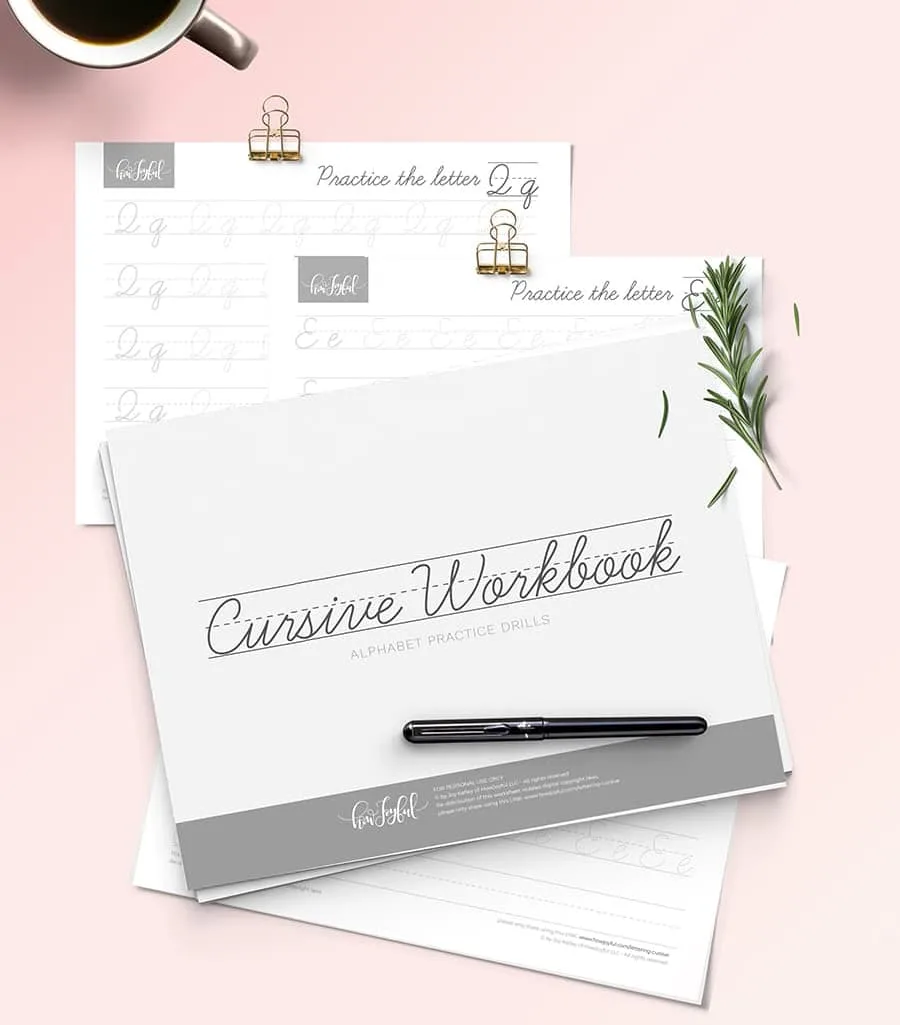
If you went to school before 2010, then chances are you were taught how to write using cursive. It was considered a writing rite of passage when the teacher brought out the ink pens and lined paper, and said the magic words: “Who wants to learn how to join the letters in words together?”
It’s kind of sad that a large number of elementary schools no longer teach children cursive writing skills. Kids found it so exciting, deciphering all those loops and curls. Cursive writing wasn’t just there to add some formality and style to your writing – it was also learning about something that had the potential to be beautiful and elegant.
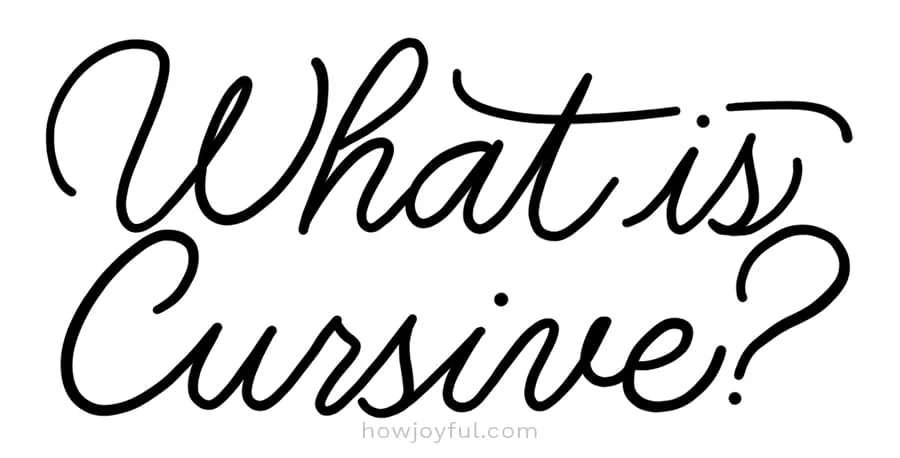
What is cursive lettering?
In the true meaning of the word, cursive lettering is not really a term used correctly, because as we discussed it in this post about the difference between calligraphy and lettering: Lettering is the art of drawing letters, and cursive is a style of writing, not drawing.
In Cursive, just as in script calligraphy, we are writing letters in a group, one attached to another. But there is no pressure sensitivity, as we are writing with a mainly monoline tool. Of course, there are derivatives that show a slight stroke variation, but the main purpose of cursive is speed and legibility. Unlike the slow pace, we use when writing Calligraphy.
A lot of people confuse cursive with script lettering, but as we talked in this post about the different calligraphy alphabets, there are 3 main families of alphabets: Serif, Sans serif, and Script.
Words are written in Script when all the letters of a word are connected together, and since cursive is a script style, many people use them interchangeably.
So what is cursive lettering? Many people use that term to refer to writing in script style, and not really lettering. Script is the umbrella family that Cursive is under.
But don't worry, we will cover it from the very beginning, so we can understand a little more about the history, just as we did with the History of Calligraphy in this post.
Must get Book!
The Art of Cursive Penmanship
The best guide to learn how to improve letter forms, legibility, legibility and make written language both fun and expressive. This book presents the subject of handwriting as a valuable and spontaneous skill.
The evolution of cursive writing
The history of writing goes back thousands of years. Cuneiform was tapped into wet clay tablets using a primitive hammer and chisel tools, such as stylus. Egyptian hieroglyphs were carved into the soft stone. The etchings started out representing pictograms (images of the things and information that needed to be recorded) and developed into representing the sounds that were used when talking about the things instead.
After documentation and communication progressed to using ink and quills, the style of penmanship when writing began to change. No matter what language was being written, scribes found it easier to join the letters together in one conjoined word.
Joined writing was faster for recording transactions, such as exchanges and sales, but they also used it when corresponding with each other. After the fall of the Roman Empire, monks and scribes carried on the tradition of writing, and since then, many alphabets or styles have evolved from one another, not always in a progressive line, since many started exploring more personal styles of alphabets.
Cursive script made sense to everyone who used it. Besides offering the writer speed due to the infrequent pen lifting, it caused fragile feather quills to last longer, stay sharper, and with a whole, a lot less splattering.
Monasteries
It made sense to the monks who dedicated their entire lives to transcribing religious documents to use some form of cursive. This led to the rise and dominance of cursive writing throughout the European/Christian world. Although styles of cursive varied – depending on the geographical region – when monks used classic Roman characters in Latin to standardize cursive, it was called Carolingian Miniscule.
Carolingian Miniscule was highly functional. It was easy to read, included lower case letters, separated the words, and used the first recorded instance of punctuation. So…grammar was born! If you’re a fan of history channels, you’ll recognize CM immediately.
Middle ages – The rise of paper
As more people learned how to read and write, the price of paper began to increase. Paper manufacturing dates back as far as the Han Dynasty in China, 105 CE. A eunuch named Cai Lun boiled cotton, bark, and cord fishnets together to make a paste. Then, he caught the paste in a fine sieve net to drain it and spread it thinly over a flat surface, allowing it to dry. Different versions of this technique were used over the next several hundred years, from medieval Europe through to the Arab world via the silk road.
As paper became pricier, scholars resorted to writing on sheep skins, called vellums. Parchment and vellum replaced Egyptian papyrus as the favorite media on which to write. To this day, paper still reigns supreme as our favorite writing surface.
Because paper was considered a luxury, folks sought ways they could get more words to fit on it. This caused a denser style of writing to be preferred, called Blackletter.
As early as the 12th century, books outside the religious sphere were written in this Gothic-style script. Carolingian Minuscule was simply too labor-intensive and time-consuming to produce, even though CM was more legible.
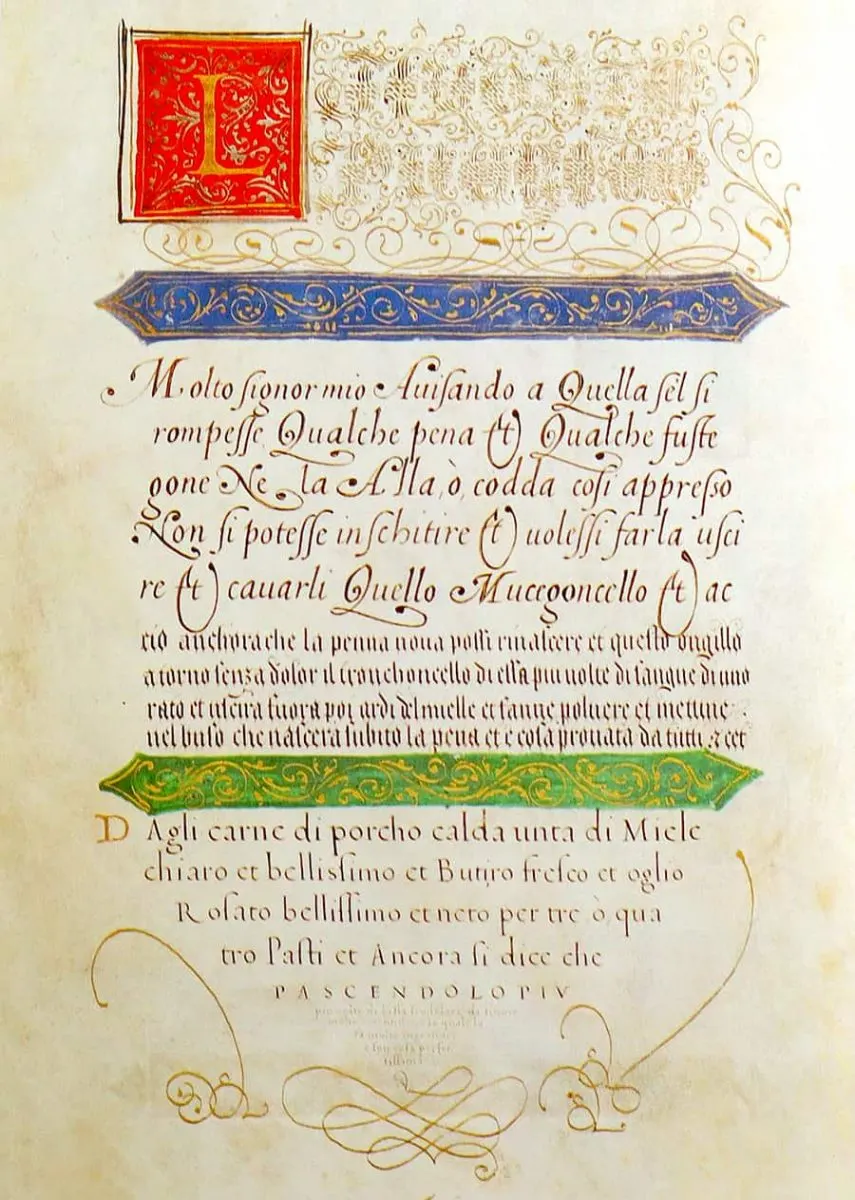
Humanist miniscule & secular writings
Italy was the birthplace of Humanist Miniscule – a handwriting developed in secular (non-religious) circles in the 15th century. The art historian, Millard Meiss, describes Humanist Miniscule like this: “Few eras in Western history have been able to produce a style of writing with such great beauty.” Based on CM, Renaissance humanists and scholars who were passionate about the revival of Greek and Roman antiquity, revived what they took to be a better interpretation of ancient Latin writing styles. HM is modeled on classic Roman Square Capitals.
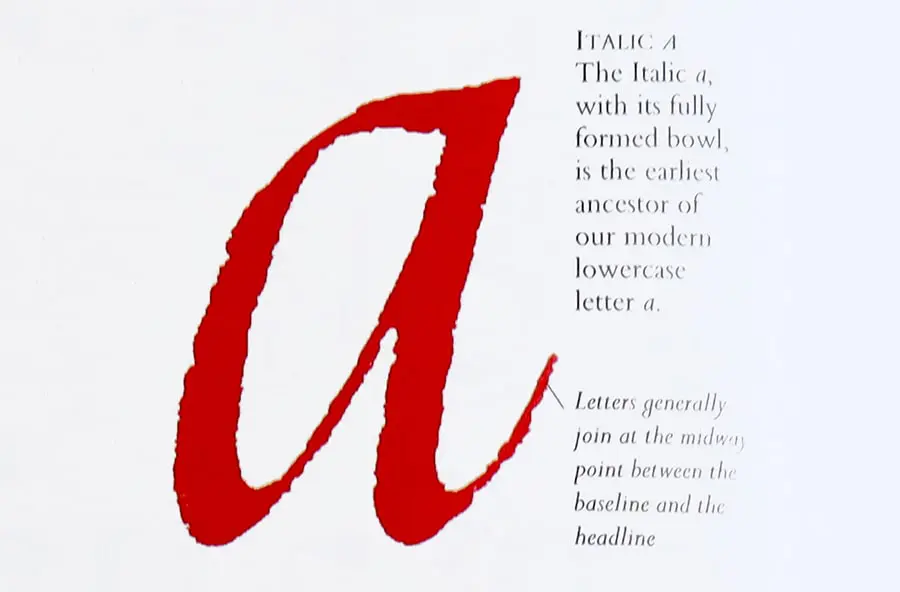
Italic cursive writing & status
Also known as Chancery Script, Italic Script is a slightly sloping, semi-cursive handwriting, much beloved of calligraphers to this day. It was developed during the Renaissance period, an era of enlightenment and innovation that started in Italy and spread over Europe. If you intend to learn calligraphy, chances are one of your first lessons will be to teach you Italic (not to be confused with italics – sloping type indicating emphasis).
Based on, and following on from, Humanist Miniscule, Italic Script was created by Niccolò de′ Niccoli. As an Italian scholar, de′ Niccoli was dissatisfied with HM’s lowercase forms. He found them too slow to write, so he invented Italic.
Italic style writing incorporates the first instance of techniques and features so characteristic of fast writing today:
- Oblique form
- Fewer strokes per character
- Joining of letters
The most significant change de′ Niccoli made to handwriting styles was to form the “a” on one story instead of using two stories. This is the accepted form of writing an “a” that we use to this day.
How did beautiful handwriting equate to having wealth and status? So many different factors have a hand in this perception, originating from the spread of writing from monasteries. Knowing how to read and write was no longer something associated with penniless monks. Expensive parchment? Check. Exclusive education. Double check.
By the dawn of the 1700s, beautiful penmanship was intrinsically linked with money, rank, and leisurely pursuits. This led to the rise of Copperplate cursive handwriting, taught to those children who were lucky enough to have tutors. Formal training under the tutelage of master scribes was considered a worthy craft to learn by all classes. Even with the invention of the printing press, people still had to communicate and record things by writing. They turned to Copperplate to do this.
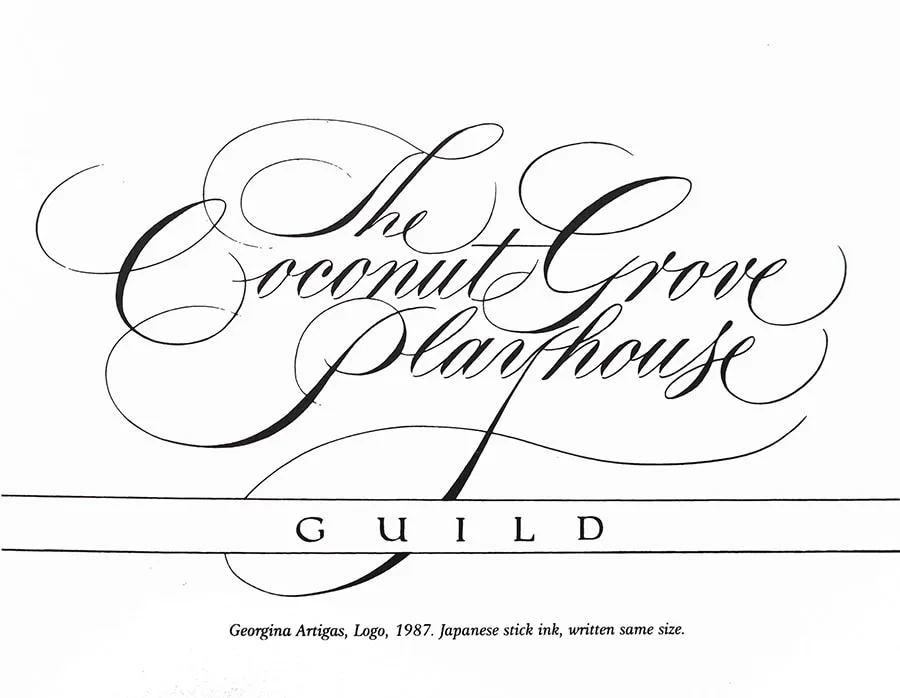
Copperplate: The beginning of modern cursive writing
In the infancy of the United States, when the country was in between breaking ties with Great Britain and creating the Union, cursive writing was undergoing yet another permutation into Copperplate. This was the style of cursive handwriting used to draft and copy the Declaration of Independence. Thomas Jefferson wrote the first draft, the Committee of Five amended it, and then the accepted draft was written out in fair copy.
By comparing these two versions side by side, it gives us a brilliant insight into how informal and formal Copperplate cursive handwriting looked. Cursive in the colonies had begun.
What becomes immediately apparent when looking at Thomas Jefferson’s draft, is that the cursive handwriting is not only recognizably modern, but entirely legible as well. It’s the kind of penmanship we identify as being produced by our grandparents, and even our parents.
Cursive thrived in the colonies and the early days of the United States. This was because professional scribing continued to be a very viable form of employment. For instance, the newly formed United States had the U. S. Constitution, the Declaration of Independence, and many other lesser known legal notification, books, and statements transcribed into official documents.
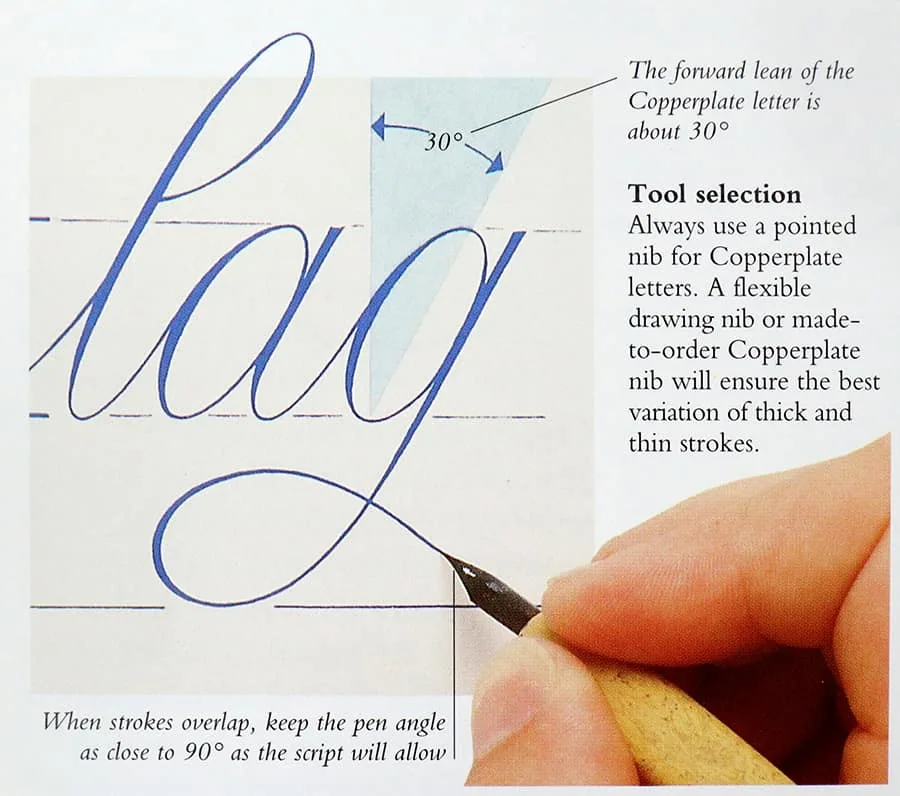
An invaluable source of Copperplate calligraphy is available thanks to George Bickman. He called upon twenty-five of the finest penmen in England between 1733 and 1741, to provide him with examples of their work. 212 of these engraving were later bound in book form to bring to life “The Universal Penman”
It became common for school goers to learn the style of cursive writing commensurable with their status. In this way, it became easier to identify someone’s social standing or profession by the way they signed their name. This led to a humble bookkeeper, named Platt Rogers Spencer, to create a more uniform, egalitarian system of writing. This is known as the Spencerian Method.
BOOK RECOMMENDATION: If you want to check more about Copperplate with a dip pen, I recommend Mastering Copperplate Calligraphy: A Step-by-Step Manual by Eleanor Winters. Its has great examples and instructions to start with Copperplate. GET IT HERE
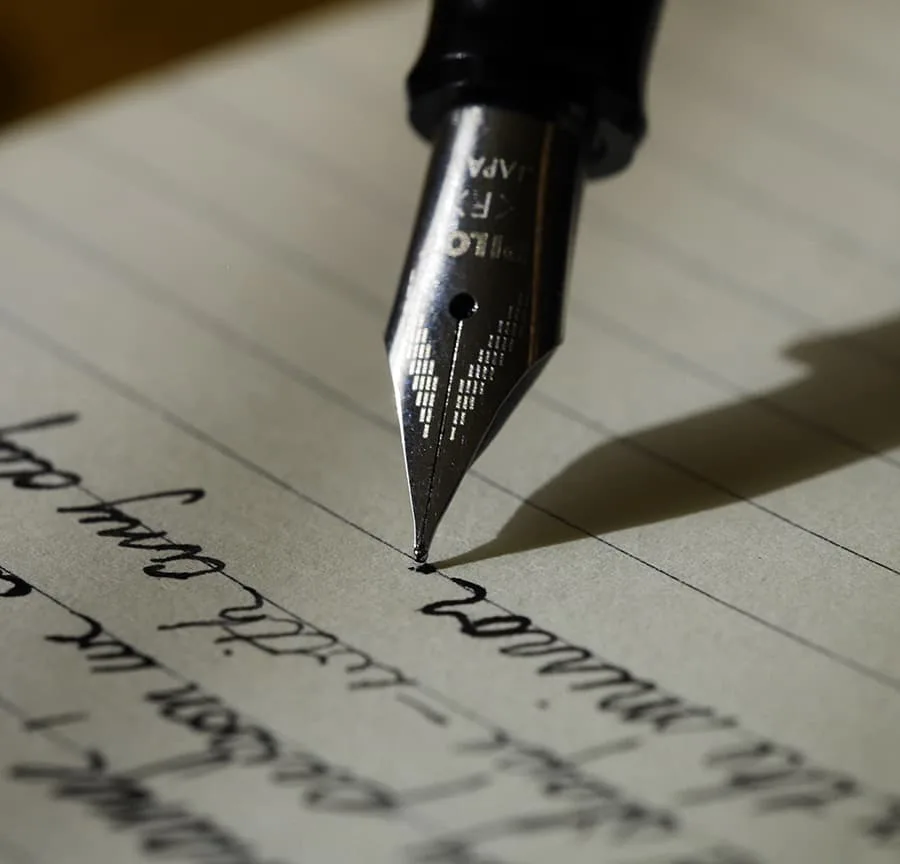
The continued rise of modern cursive
Named for its originator, Spencerian Script wasn’t only necessary for business communication, it was de rigueur to use it for one’s letter writing too. Spencerian Script created instantly elegant personal correspondence – it’s unique, oval-centric penmanship style could be written quickly and legibly. After its launch in 1840, SS was taught in schools and nurseries, in fact, Spencer had developed his writing technique exactly for that purpose.
Unfortunately, Spencer did not live long enough to see the fruits of his labor. After his death, his sons took up the mantle of promoting SS teaching in common schools, not just elite institutions. They published his now seminal book titled: “The Spencerian Key: Practical Penmanship,” which became the standard for how to learn cursive writing across the United States. SS stayed in common usage in business until replaced by the typewriter at the turn of the nineteenth century.
BOOK RECOMMENDATION: A great resource and introduction to Spencerian writing is the Book Spencerian Handwriting by Platt Roger Spencer, with the basics and also practice sheets. GET IT HERE
The story of cursive writing continues…
Okay, so by now you might have guessed that there have been many, many permutations of accepted styles of cursive writing throughout the last 300 years!
So let's revise the most popular ones that are still used and that YOU might have learned in school!
Palmer Method
Developed and then promoted by its originator, Austin Palmer, this style of cursive writing took off in the late nineteenth, early twentieth centuries. It’s a simplified version of the more ornate Spencerian Script.
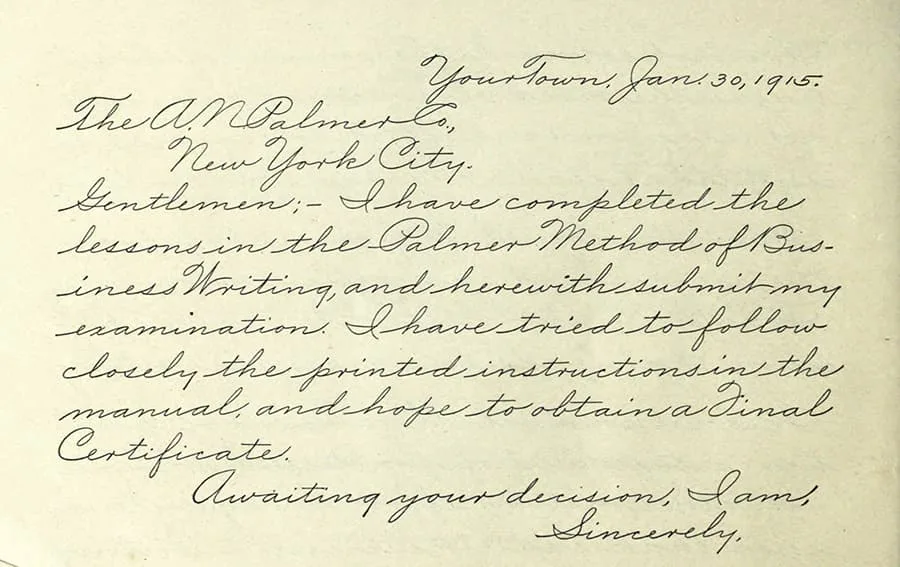
Then came…
Zaner-Bloser Style
Stemming from the Zanerian College of Penmanship, this streamlined Spencerian Script method of writing spread through schools and business communications in the late nineteenth century.
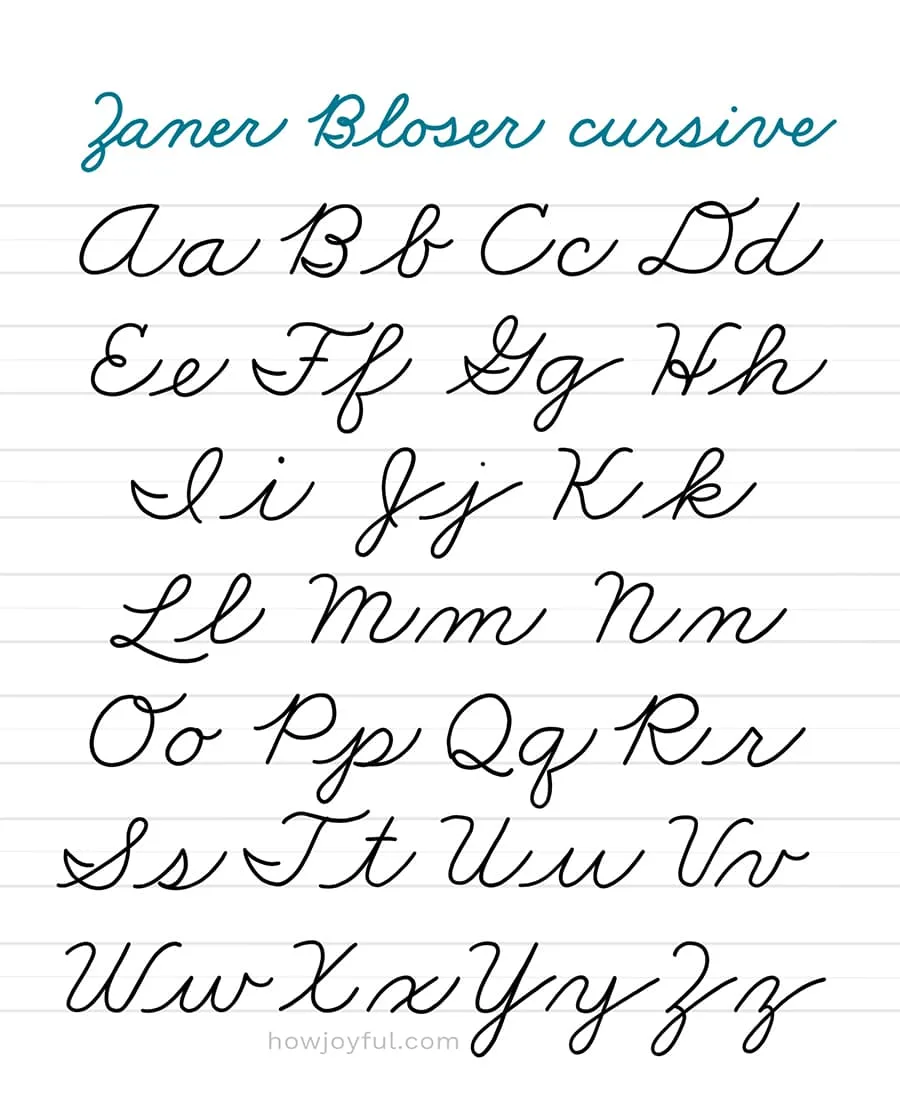
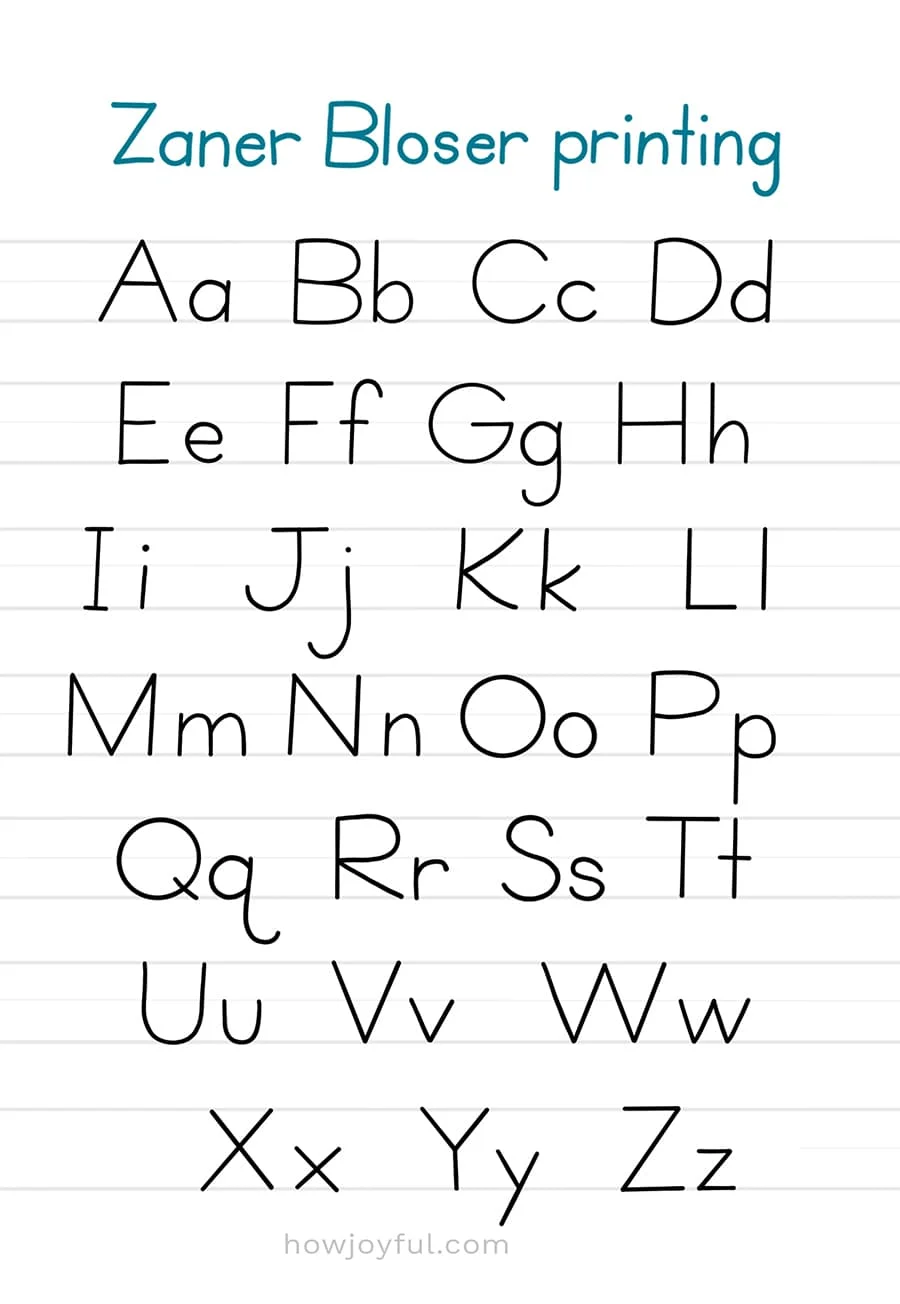
Then came…
D’Nealian Style
A teaching method and style of writing developed in the 1970s to teach both cursive and manuscript/print/block handwriting to children. Principally derived from the Palmer Method, D’Nealian made it easier for children to pick up basic handwriting skills that could transition into full-on cursive.
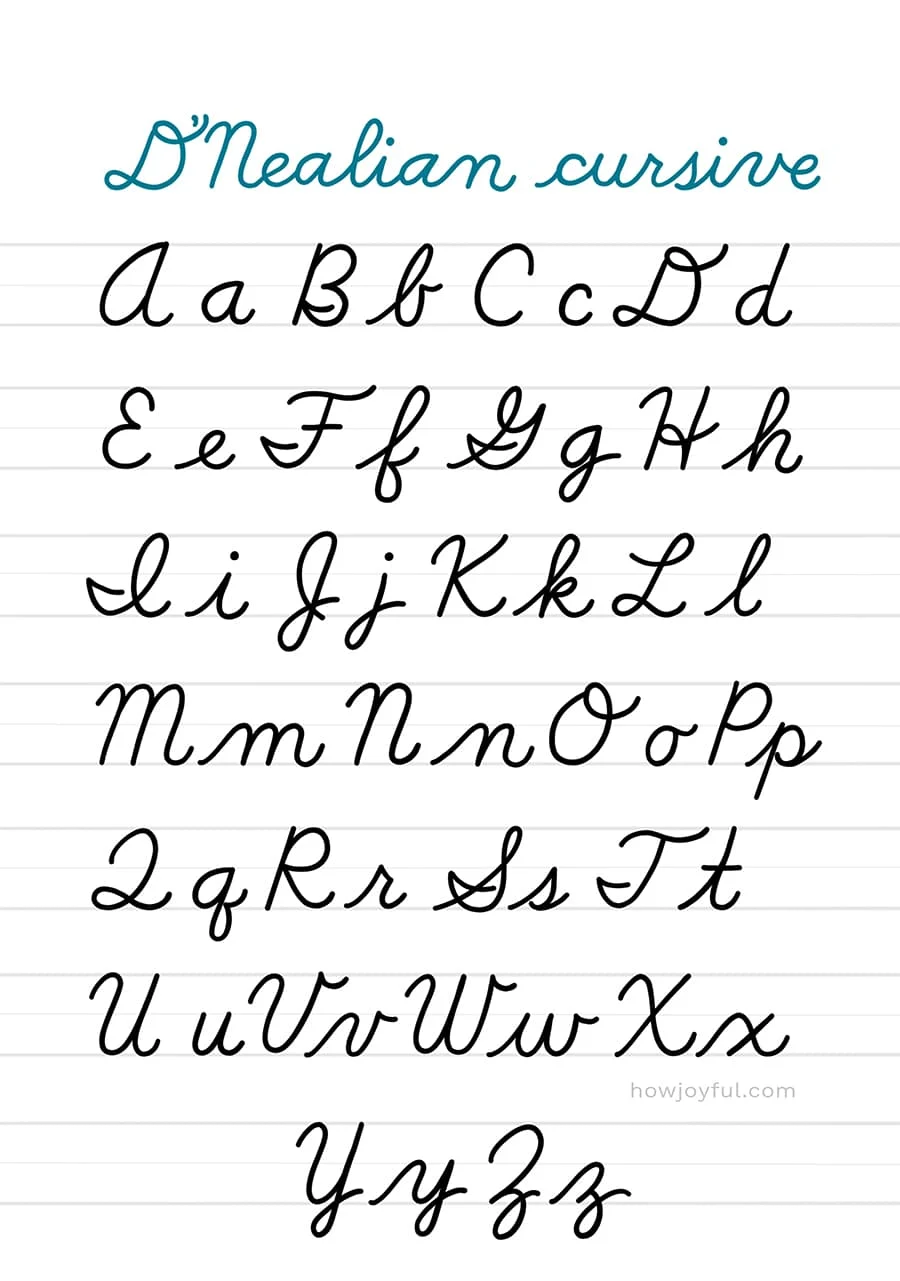

What is the difference between Zaner Bloser and D'Nealian?
As the folks at Simply Charlotte Mason share in this post:
- “D’Nealian is written at a slight slant in both manuscript printing and cursive. Zaner Bloser is written straight up and down in manuscript printing and slanted in cursive.”
- “D’Nealian letters are learned with tails in manuscript printing, so the transition to cursive is simpler; pretty much all you need to do is connect the tails. Zaner Bloser letters are learned as two completely different styles between printing and cursive.”


These two styles are the most popular styles of writing that are taught to students, both in the USA and also in many other Countries.
And there is where the history of cursive writing kind of stops. Sadly, no other handwriting style has been developed since D’Nealian. Because of the dawn of the digital era, the rest of the story is all about keyboard fonts.
Cursive script’s ever-changing style
There are two recognized cursive writing techniques in use today:
- Formal cursive – most of the letters in a word are joined together in one flowing movement
- Casual cursive – a combination of pen lifts and joins
These two categories are further subdivided into three writing styles:
- Looped
- Italic
- Connected
By using cursive, people in charge of writing and recording things throughout history could create a word in a single, complex stroke. The “dip, write, lift” method was far easier and faster than the block or print letters method of “dip, write, lift, write, lift, write, etc.”
Fun fact. In 2013, a study showed that cursive writing speed is slower when writing in only one language – French!
Cursive script subclasses and genres
Connected – Forming the letters of words using lines to connect the letters. Some of the letters are looped to facilitate connections.
Looped – Some of the descenders and ascenders are given loops so that the pen doesn’t have to leave the paper. This is the most recognized form of cursive writing.
Italic – Writing in a non-looping style. The letters are either joined with no loop or not joined at all. No joins are used after the letters g; j; q; y.
What are the main differences between cursive and print handwriting?
Handwriting can be done in two different styles that vary tremendously in style and form from each other, those are Cursive and print. So let's check the differences between them:

- Letters are joined together to create a word.
- Has a flowing style that provides an efficient and comfortable writing method.
- Aka “Running hand,” the word ‘cursive’ comes from the Latin root ‘currere’ – to run.
- Historically used for the speed when logging accounting and other reports.
- Is no longer a requirement in school curriculums.

- Letters are written separately when forming a word.
- Reminiscent of words created as seen in a book or on a computer screen.
- There is a break between every letter in the word which requires a pause in the flow of the hand.
- Print writing is a recent handwriting adaptation , redolent of technological advancements, such as the keyboard.
- A required part of any school syllabus.
What tools do I need for writing cursive?
Just as I recommend with lettering, you don't need any expensive or fancy tools to get started, a pen and paper will do just fine, just make sure you also add an eraser and ruler if you don't have paper with a grid. Below are some nice things to have to make your practice easier.
Fountain Pen: Not 100% necessary, but so nice for practice. This is my favorite fountain pen because it delivers a very smooth writing experience.
Guideline Ruler: Perfect to create grids with easy strokes. It such a great help for drawing parallel lines, circles, angles and other geometrical shapes.
Copy Paper: Affordable and smooth paper for practice. As I've shared before, this is my favorite paper for Calligraphy practice, or just any practice!
CAT: Guidelines for cursive
If you've read my calligraphy for beginners guide, you will probably be familiar with the guidelines for letters, but I figure that since cursive is very basic, I will explain in the most fun way!
I remember when I was in school and my teacher taught us the guidelines with a cat, I tried to replicate it here so you can see the lines and the relations with the letters.

ASCENDER: This is the very top of letters that extend pass the x-height or letter cap. Letters like lowercase k, t, l, f and h have the upper part touch. Moreover, this is the like that most uppercase letters touch.
X-HEIGHT: This as the name implies is the maximum height that the lowercase x letter touches and also most lowercase letters that do not have an ascender.
BASELINE: This is where all the letters rest.
DESCENDER: This is where letters like lowercase g, j, and y touch their “tails”
And now, let's revise some characteristics of cursive and the letters in the guidelines. Because while most cursive letter styles use the same guidelines, some letters (mostly uppercase) reach different lines of the guides.
- All letters sit on the base or body line (Baseline).
- All letters slant slightly to the right side of the page.
- Letter body shape sits oval inside the body lines (Baseline + X-height), not circular as they are for printing/print handwriting.
- Letters starting at the lower body line (Baseline) always slope
- Letters end with a finishing ascending stroke that ends at the upper body line (x-height).
- Some cursive letters have loops reaching the top line (Ascender line) and some have loops reaching the bottom line (Descender line).
How do you write the alphabet in cursive handwriting?
Below you can see an example of the most popular cursive alphabet and a sample of the alphabet you will find in the FREE workbook that I am sharing below.
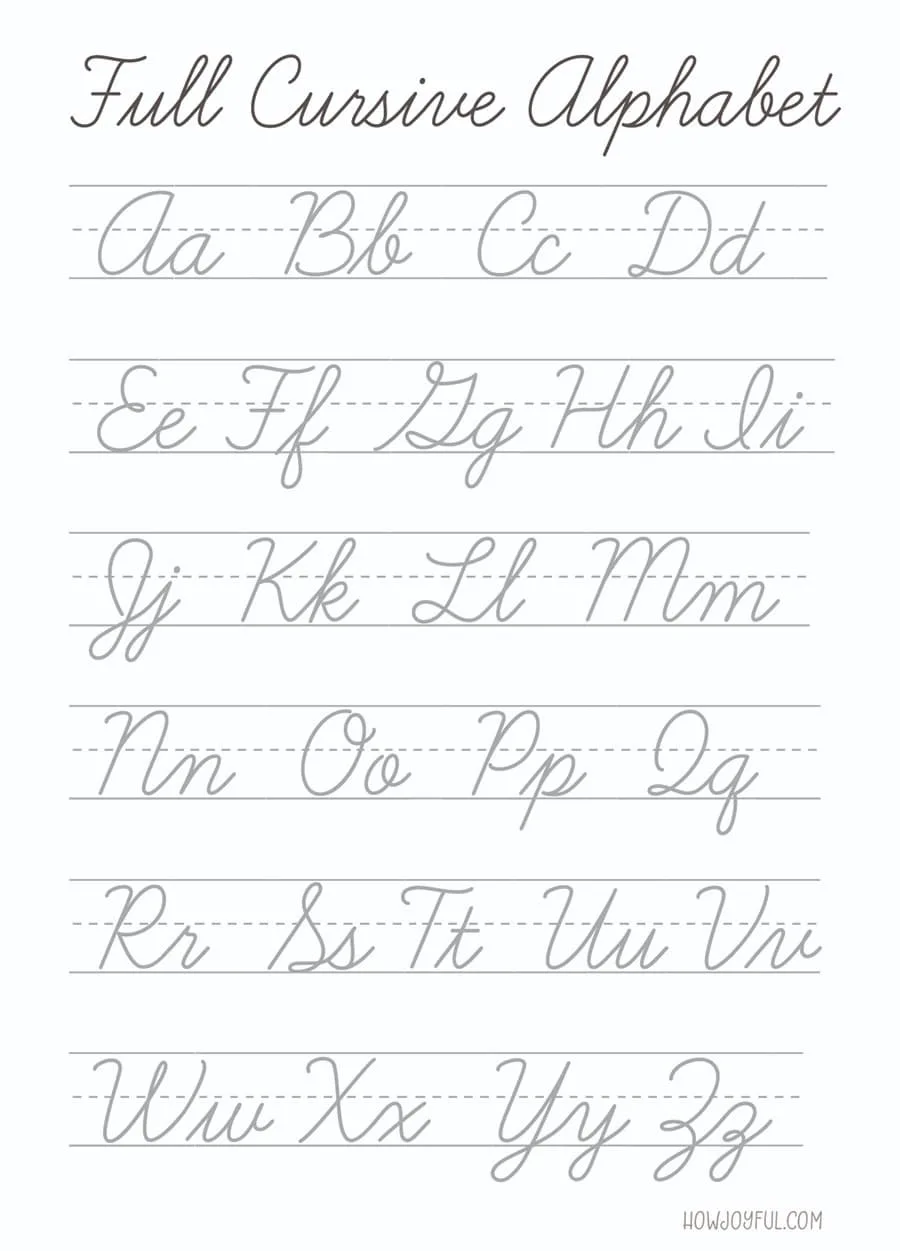
How do you write uppercase letters in cursive?
Because there's no better way to illustrate how you can write letters, I crested this image below where you can follow the arrows and following by numbers.
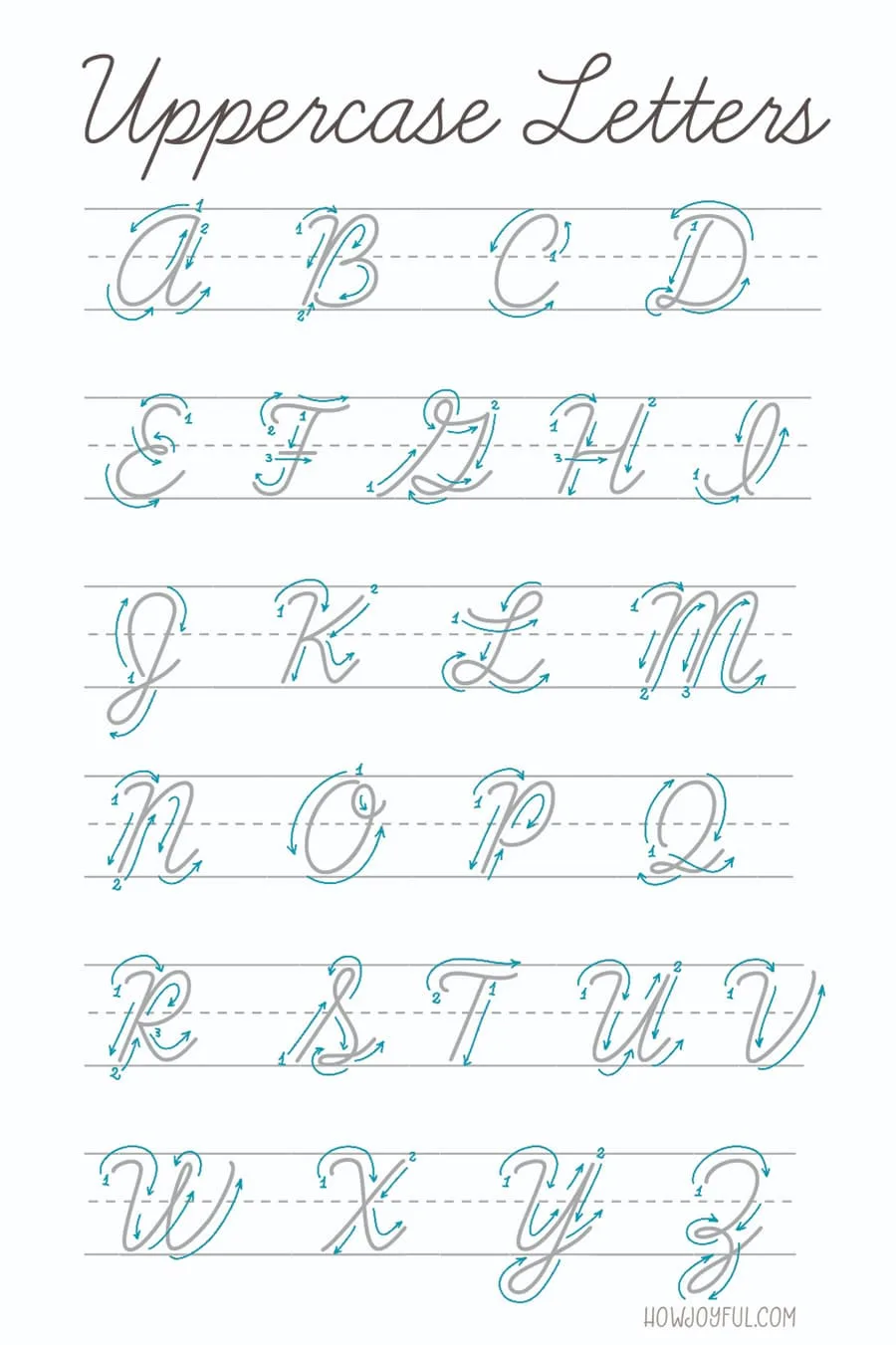
How do I write minuscule letters in cursive?
Just as with the uppercase, below you can see the strokes and direction for how to create the cursive lowercase alphabet.
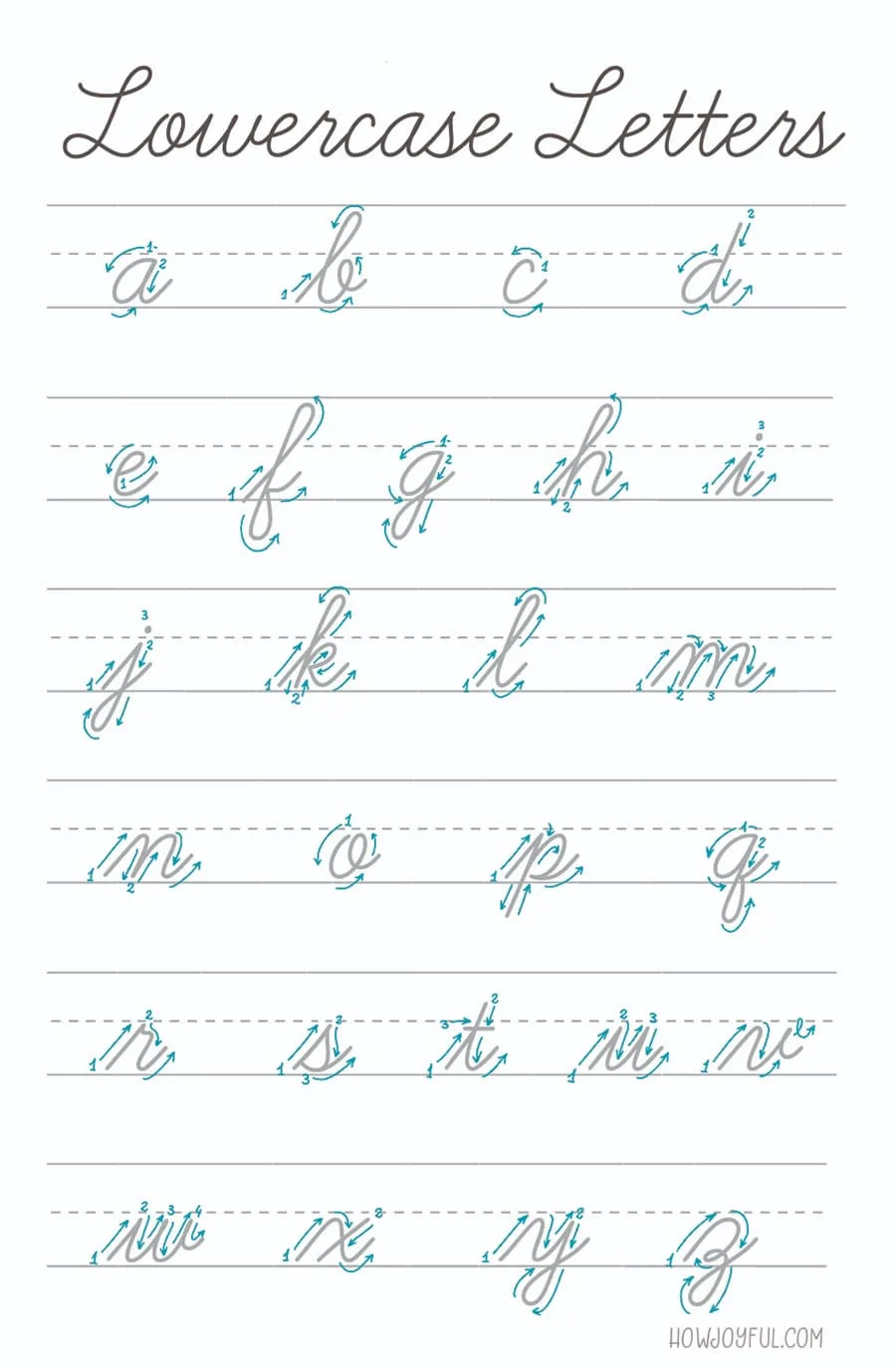
In what order should I practice the cursive alphabet
Just as you would with anything that you are leaning, going from easy to hardest is the best way to start practicing cursive.
And while we don't have to worry about line thickness, we do have to pay attention to how letters are constructed and when (and if) we need to lift the pen to finish the parts of our letters.
Here is the list of letter on cursive alphabet from easiest to hardest
- Lowercase: c, a, d, g, q, i, t, p, u, w, j, e, l, f, h, k, r, s, b, o, v, m, n, y, x, z
- Uppercase: I, L, J, U, V, W, X, Y, Z, D, P, R, B, F, H, K, N, M, A, E, C, G, O, Q
Now, of course, as with anything, there are people that would not find any of them hard to practice and there are people that will have challenges with many of them.
This list is just a reference so that you can keep in mind in case you are getting frustrated with a certain letter. Maybe you can just start with the ones that have a simpler construction first.
Developing your personal style of handwriting
Just like you would in the case of Calligraphy, developing a personal style of cursive handwriting has everything to do with variations, speed and comfort.
Below you can see some examples I made for you, the first one “Mix handwriting” is what I normally do when writing, mixing connected and non-connected letters to form a word.
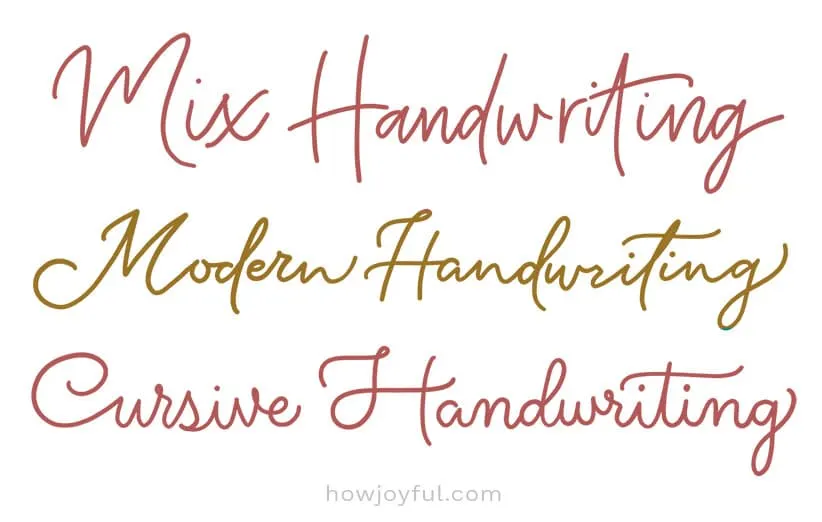
The second “Modern handwriting” is a mix of different styles together to create a Modern look.
And the third line “Cursive handwriting” is a more soft look of the classic American Cursive that I am sharing on the free workbook, this is a lot more round and closer together to give a uniform look.
Making a case for cursive handwriting: Does connected letters equal connected thinking?
The reason cursive is no longer taught in schools is because it’s considered better to teach children how to work on a keyboard. Not only is typing preferred by many teachers, but they encourage students to take notes on smart devices and tablets too. Is this the best way to learn?
Thanks to MRIs (Magnetic Resonance Imaging), brain mapping experts have been able to pinpoint the parts of the brain we used during critical thinking functions, such as writing, thought, and speech.
When students use cursive writing to take notes and craft essays, both the logical left side of the brain and the intuitive right side of the brain light up like a Christmas tree in December. This doesn’t happen when the student is using a keyboard. – Reference Source
Why students should learn cursive
- Once cursive has been learned, it’s faster than printing and typing. This is because fewer mistakes are made when writing than they are when typing.
- The technique used to create cursive results in an increase in thought flow. What you think lands up on the page faster when you write than when you type.
- Cursive writing helps with dyslexia and dysgraphia.
- Because the words are visualized as complete units, rather than separate pen strokes, cursive leads to a better grasp of spelling.
- When you write something down, you remember it better.
- Because – history!
DOWNLOAD the cursive alphabet workbook

Below you can subscribe to the HowJoyful Newsletter and access not only this Cursive workbook but also the ever-growing library of FREE workbooks and resources inside the Letter Vault.
All you have to do is subscribe below, and if you are already part of the HowJoyful Newsletter community, just click here to download inside the Letter Vault or just subscribe below!
Cursive Conclusion
Cursive is the backbone of script writing and script calligraphy. It makes learning calligraphy so much easier after you know the basics of cursive.
Cursive looks wonderful on paper and even better on envelopes, bullet journals or just everyday notes. There’s just something about cursive writing that appeals to anyone who looks at it.
The real beauty behind cursive writing is that it doesn’t take a lot to get started once you’re interested in this great skill.
If you have paper and something with which to write, you’re well on your way to being able to create gorgeous writing. Once you have the basics down, learning pressure techniques you can start with Calligraphy and master it so much easier!


References on this article
- Medieval papermaking printing – Stanford.edu
- Keyboards are overrated, cursive is making us smarter – Qz.com
- The difference between Zaner Bloser vs D'Nealian – Simply Charlotte Mason
And remember that if you want to save this post for later, just pin one of the images above!
I hope you have a wonderful day!






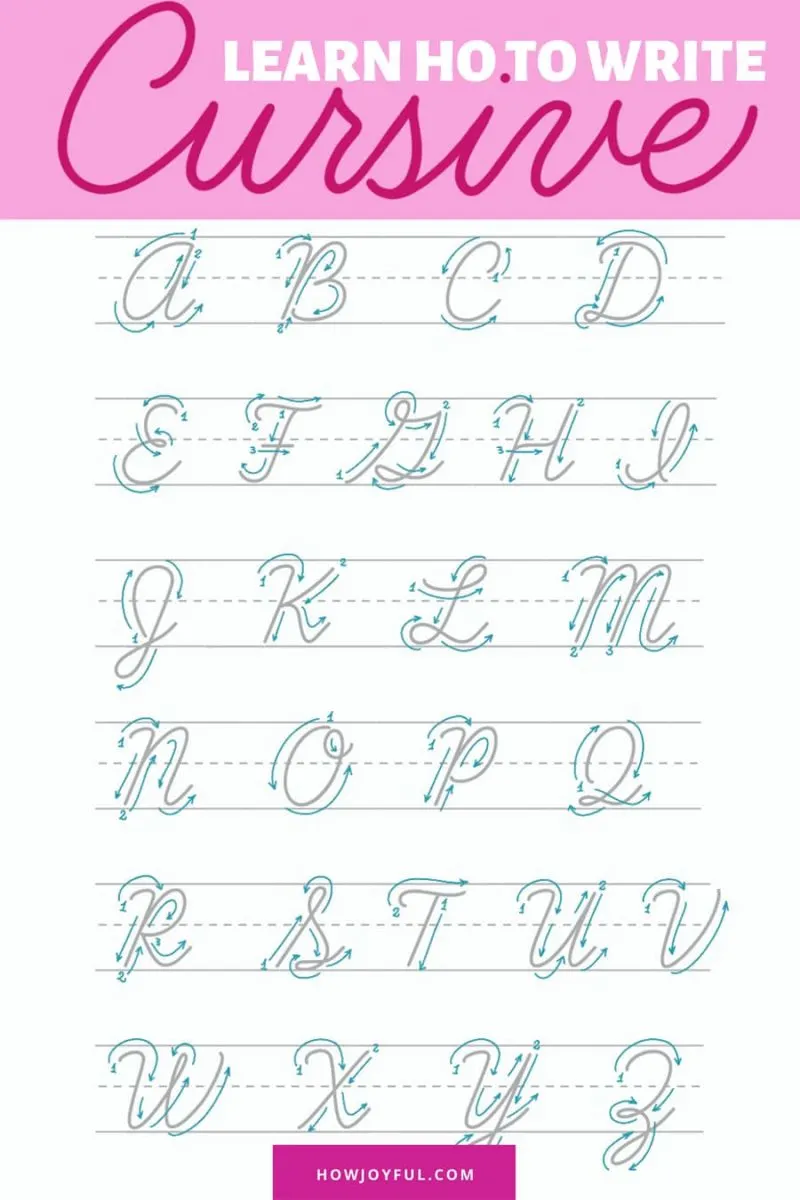

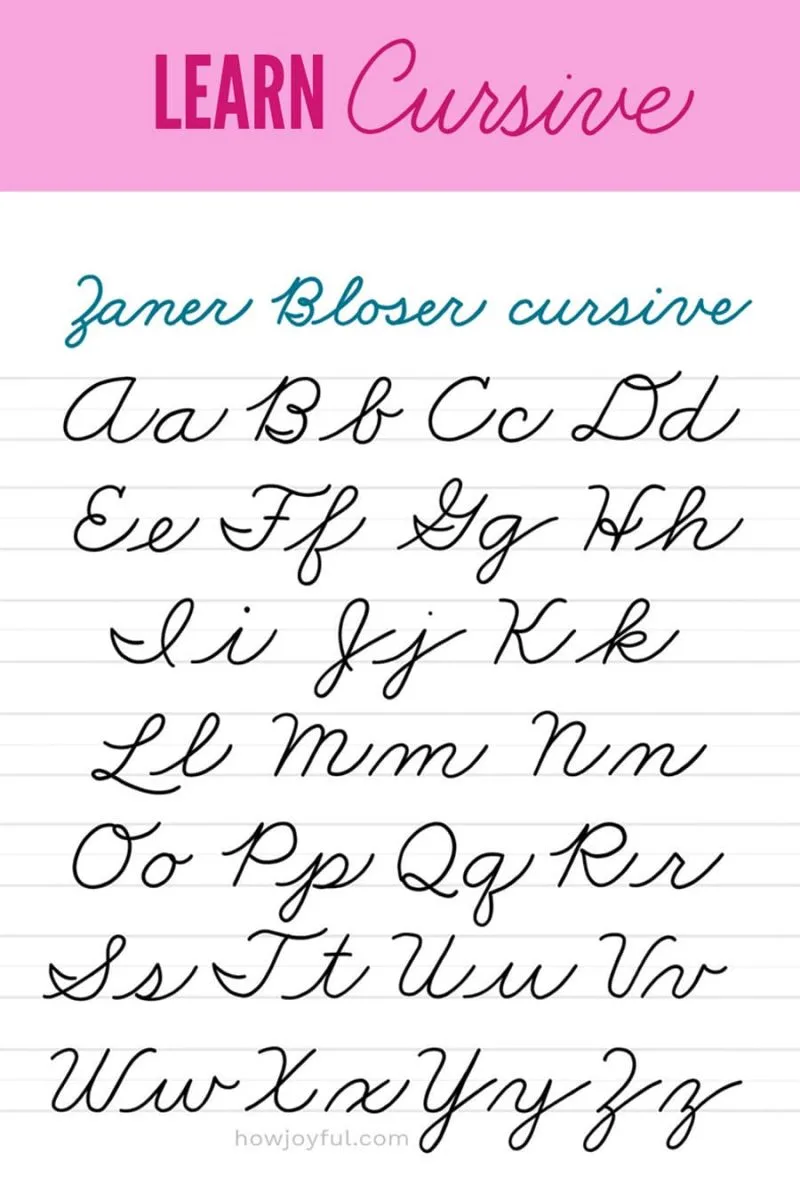



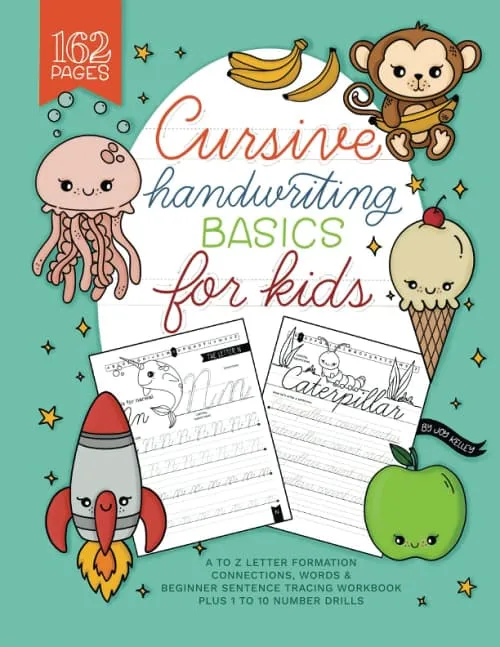
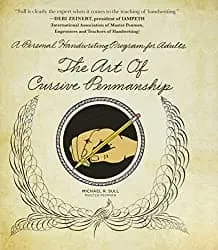
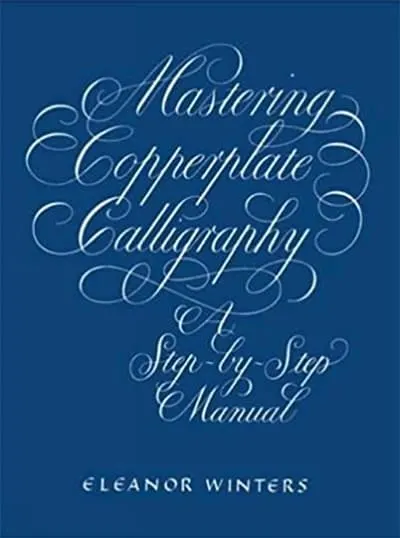
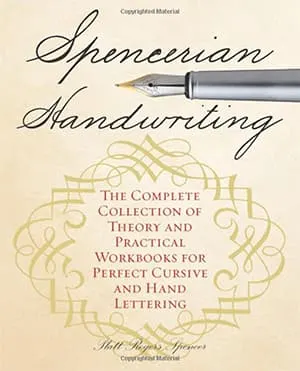

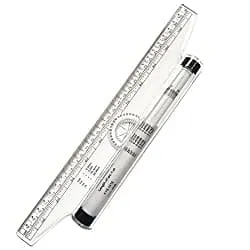
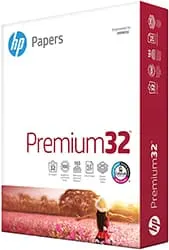
Stefanie Orton
Sunday 6th of June 2021
My daughter wants to learn cursive this summer. This is an amazing resource thank you!!
Joy Kelley
Tuesday 8th of June 2021
So happy you found my blog! And all the luck to your daughter! It's so awesome that she wants to lean! Have a wonderful day! Joy -